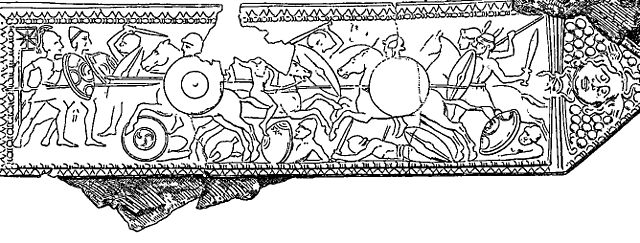The Battle of Magnesia took place in either December 190 or January 189 BC. It was fought as part of the Roman–Seleucid War, pitting forces of the Roman Republic led by the consul Lucius Cornelius Scipio Asiaticus and the allied Kingdom of Pergamon under Eumenes II against a Seleucid army of Antiochus III the Great. The two armies initially camped northeast of Magnesia ad Sipylum in Asia Minor, attempting to provoke each other into a battle on favorable terrain for several days.
Illustration of a bronze plaque from Pergamon, likely depicting the Battle of Magnesia
The Seleucid Empire in 200 BC, (before expansion into Anatolia and Greece).
First phase of the battle
Second phase of the battle
The Roman–Seleucid war (192–188 BC), also called the Aetolian war, Antiochene war, Syrian war, and Syrian-Aetolian war was a military conflict between two coalitions, one led by the Roman Republic and the other led by the Seleucid king Antiochus III. The fighting took place in modern-day southern Greece, the Aegean Sea, and Asia Minor.
Asia Minor after the war
Head, possibly a Roman copy of a Hellenistic original, depicting Antiochus III of the Seleucid empire
This 18th century drawing depicts Flaminius announcing the freedom of the Greeks at the Isthmian Games in 196 BC.
Coin depicting Eumenes II of Pergamum. Eumenes was one of the key Roman allies during the war and aided greatly in the Roman coalition's victory at Magnesia.








